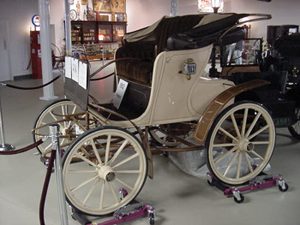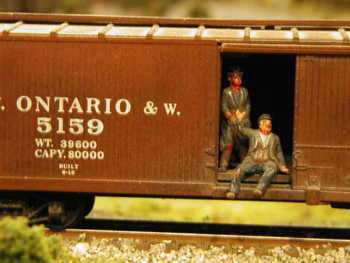 |
The Railroad added a new character to American folklore. His name was Weary Willie, the tramp. When he heard a locomotive whistle moaning blue notes down in the freight yards, Willie felt that a change in
scenery was called for. However, he had no intention of paying tax to the railroad barons. One famous tramp claims to have spent just a shade over seven dollars for 500,000 miles of free train rides.
These primitive
American tourists suffered all the risks and discomforts of pioneers. Accommodations varied. Sometimes the hoboes found an empty boxcar and a friendly brakie and traveled deluxe. An unused freight car with sides but no top was
windier, but still comfortable. The catwalk on top of a freight car made a good bed, but a man had to hang on in his sleep.
If the brakies were hostile, there were various places a tramp could sneak a ride. Just
over the bumpers between freight cars is a narrow steel ledge where a man can stand and hold on for some hours, risking a fall between the cars if a bucking freight breaks his grip. Real old train barnacles balance a narrow plank
on the steel struts below a passenger car and thus steal high-speed rides through the country, just a few inches above the gravel and with death only a split second away. A tramp who can take punishment crawls into an empty battery
box below a pullman car and lies in this narrow, dusty coffin for a transcontinental trip. Some hoboes break into the animal cars and sleep among the sheep and cattle, or hide in the coal piles in the engine tenders. One
professional searched for years for a way to conceal himself below the boiler of the engine.
Holbrook, in his Story of the American Railroads, estimates that in the nineties there were about 60,000 tramps riding the
rains. After the twentieth century began, the number had risen to perhaps fifteen times that number, and during the Depression, about a million men were hoboing around the country by rail. Hardly a freight passed without a group of
men perched on the top of every car, the police not daring to interfere. At various times the vagrants held conventions and elected their own kings. |

